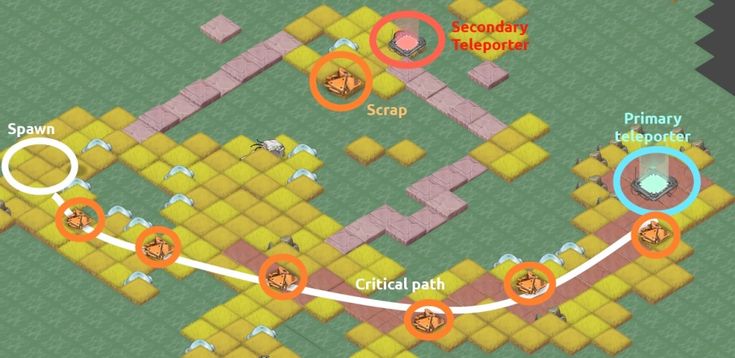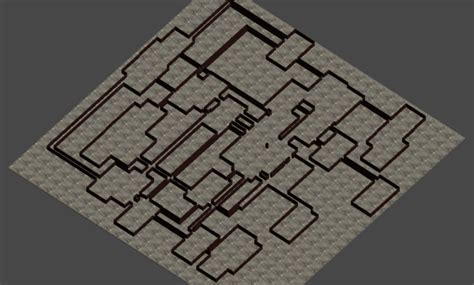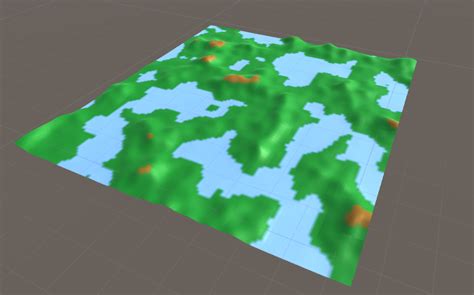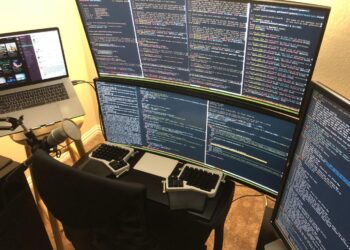Step into the world of a game like Minecraft, and you’re met with a sense of boundless possibility. A unique landscape of mountains, forests, and oceans stretches out before you, a world that is yours and yours alone. Fly through the galaxies of No Man’s Sky, and you’ll witness quintillions of unique planets, each with its own ecosystem of alien flora and fauna.
Have you ever stopped to wonder how these impossibly vast digital universes are built? The answer is not an army of thousands of artists hand-crafting every mountain and tree. The answer is one of the most powerful and revolutionary concepts in modern game development: procedural content generation (PCG).
Procedural generation is the magic behind the curtain, a method of creating massive amounts of data algorithmically rather than manually. It’s a set of rules, a recipe for creation, that allows a computer to generate endless content on the fly, from entire galaxies to the intricate layout of a single dungeon.
This technology is the driving force behind the explosive growth of genres like roguelikes and survival sandboxes, empowering small independent teams to create worlds that rival the scale of blockbuster studios.
This deep dive will explore the fascinating universe of procedural generation. We will unravel what it is and how its core algorithms work, examine the profound benefits that have made it a cornerstone of modern design, and celebrate the iconic games that have pushed its boundaries.
We will also confront the unique challenges of taming this algorithmic chaos to create meaningful experiences, ultimately revealing how PCG is not just building game worlds, but is set to shape the future of all digital content.
What is Procedural Generation? The Art of Algorithmic Creation
At its heart, procedural content generation is a simple concept: it’s the practice of using algorithms to create game content, rather than creating it by hand. Think of it like the difference between a photograph and a detailed set of instructions for painting that photograph.
- Handcrafted Content: This is the traditional method. A level designer meticulously places every enemy, every platform, and every treasure chest. The result is a static, controlled, and highly authored experience, like the masterful levels of Super Mario Bros. Every player has the exact same experience.
- Procedural Content: This is the algorithmic method. A developer writes a program—a set of rules and constraints—that knows how to build a level. The program then runs this set of rules to generate a unique level every time the game is played.
The secret ingredient that makes this possible is the random seed. A seed is a number (which can be very long) that is used as the starting point for the generation algorithm. The algorithm’s output is not truly random; it is pseudo-random. This means that for the exact same seed, the algorithm will produce the exact same output every single time.
This is a critical feature, as it allows players to share the seed number of a particularly interesting world they’ve discovered, enabling others to visit and explore the exact same procedurally generated creation. The algorithm provides the “recipe,” and the seed provides the unique “flavor” for that specific iteration of the world.
The Cornerstones: Algorithms That Build Worlds
Procedural generation isn’t a single technique but a toolbox of different algorithms, each suited for a specific task. Developers often combine these methods to create rich and complex worlds. Understanding a few of the most fundamental algorithms reveals the genius behind how chaotic numbers are transformed into coherent landscapes and structures.
A. Noise Functions (Perlin Noise & Simplex Noise): This is perhaps the most important algorithm for creating natural-looking environments. True randomness (like white noise on a TV) is chaotic and spiky. Perlin noise, developed by Ken Perlin, is a type of “gradient noise” that produces smooth, organic-looking patterns.
It’s the secret sauce behind the gently rolling hills, winding coastlines, and sprawling cave systems in Minecraft. By layering different frequencies and amplitudes of noise, developers can create incredibly detailed and realistic-looking terrain, clouds, water currents, and even textures for wood or stone.
B. Cellular Automata: This method involves creating a grid of “cells,” each in a particular state (e.g., “alive” or “dead,” “wall” or “floor”). The system then runs through a series of steps, and on each step, the state of a cell can change based on the state of its neighbors according to a very simple set of rules.
For example, a “floor” cell might become a “wall” cell if it’s surrounded by too many other walls. Despite the simplicity of the rules, complex and organic structures can emerge. This technique is famously used to generate the winding, unpredictable cave systems found in games like Spelunky and Terraria.
C. L-Systems (Lindenmayer Systems): Originally developed to model the growth of plants, L-Systems use a string-rewriting technique to generate complex, branching, and fractal-like structures. Starting with an initial string (the “axiom”), the system repeatedly applies a set of rules to rewrite the string into a more complex one. This resulting string can then be interpreted as drawing commands. This makes L-Systems the perfect tool for procedurally generating realistic-looking trees, ferns, river networks, and even the layout of city streets.
D. Dungeon Generation Algorithms: Many specific algorithms exist for creating playable levels. Binary Space Partitioning (BSP), for instance, works by recursively splitting a rectangular area into two smaller areas, then connecting these “rooms” with corridors. This is a reliable way to generate a series of interconnected rooms that feel like a classic dungeon layout, ensuring that all areas are reachable and the level has a logical flow.
Why Developers Embrace Procedural Generation
The adoption of PCG is not just a novelty; it provides tangible solutions to some of the biggest challenges in game development, benefiting both the creators and the players.
A. Infinite Replayability and Player Value: This is the most significant benefit for the gaming community. In a procedurally generated game, no two playthroughs are ever the same. The roguelike and roguelite genres, exemplified by hits like The Binding of Isaac and Hades, are built entirely on this principle. Each run presents a new layout of rooms, different enemy placements, and a unique combination of power-ups. This constant novelty keeps the experience fresh and challenging, encouraging hundreds of hours of play from a single title and offering incredible value for the price.
B. Achieving Massive Scale with a Small Team: Handcrafting a game world the size of a real-world country, let alone a galaxy, is simply not feasible for most development studios. Procedural generation allows a small team, or even a single developer, to create an astronomically large game world. No Man’s Sky and its 18 quintillion planets were famously created by a small team at Hello Games. The algorithms, not an army of artists, created the universe. This empowers indie developers to dream big and create experiences on a scale that was once the exclusive domain of AAA studios with massive budgets.
C. The Magic of Emergent Gameplay: Emergent gameplay occurs when simple, independent systems within a game interact in complex and unexpected ways that were not explicitly designed by the developers. Procedural generation is a catalyst for this. A game might have a system for weather, a system for animal AI, and a system for NPC patrols. A procedurally generated storm could drive a herd of animals into the path of a patrol, creating a chaotic and memorable encounter for the player that feels organic and unscripted. These emergent moments make a game world feel less like a static movie set and more like a living simulation.
The Titans of Procedural Generation

While countless games use PCG to some degree, a few stand out as landmark titles that showcased the technology’s true potential to the world.
- Minecraft: Perhaps the most famous example, Minecraft‘s entire world is a testament to the power of noise-based generation. It uses a complex layering of Perlin noise algorithms to create its iconic biomes—from deserts and jungles to frozen tundras. It generates terrain, ore veins, cave systems, and structures like villages and temples, all stemming from a single seed number. It gave millions of players a truly infinite sandbox for creativity and exploration.
- No Man’s Sky: This game took the concept of procedural scale to its logical extreme. The developers created a suite of algorithms that could generate not just terrain, but entire ecosystems. Rules were created for generating unique plant life, bizarre creatures with varying limbs and behaviors, weather systems, and even the appearance and sound of starships. It demonstrated that PCG could be used to create not just the landscape, but everything that inhabits it.
- Spelunky & Hades: These games represent the pinnacle of procedural level design within the roguelike genre. They don’t generate completely random chaos. Instead, they use a clever hybrid approach. The developers handcraft hundreds of small room “chunks,” each with a specific challenge or layout. The procedural generation algorithm then stitches these handcrafted rooms together in a unique order for each run, ensuring that the moment-to-moment gameplay feels tight and intentionally designed, while the overall level layout remains fresh and unpredictable.
The Art of Taming Chaos: Challenges and Limitations
Despite its immense power, procedural generation is not a magic bullet. It presents its own unique set of difficult design challenges that require great skill to overcome.
A. The Quality Control Problem: If your game has a near-infinite number of levels, how do you test them all? An algorithm can inadvertently generate a level that is impossible to complete, unfairly difficult, or simply boring and devoid of interesting features. Developers must create sophisticated constraints and analytical tools to ensure their generators consistently produce high-quality, playable content.
B. Lacking the Human Touch: A purely procedurally generated world can sometimes feel generic, random, or soulless. Handcrafted design allows developers to create specific emotional arcs, guide the player’s eye with deliberate composition, and tell a story through the environment. It is difficult to teach an algorithm about pacing, dramatic reveals, or environmental storytelling. This is why many of the best games use a hybrid approach, blending procedural elements with handcrafted points of interest to get the best of both worlds.
The Future is Algorithmically Built

Procedural content generation has fundamentally transformed the landscape of game development. It has democratized the creation of vast, expansive worlds and given rise to entire genres built on the promise of infinite replayability. It has shifted the developer’s role from a meticulous builder to that of a creative gardener—one who designs the seeds and cultivates the rules that allow incredible worlds to grow.
The journey is far from over. As technology advances, procedural algorithms are becoming more sophisticated, capable of generating not just environments, but complex narratives, character behaviors, and dynamic quests. Beyond gaming, the principles of PCG are essential for building the massive, persistent digital worlds of the metaverse. The insatiable demand for content in these new virtual spaces can only be met algorithmically. The future of our digital experiences, from our games to our virtual realities, will not be entirely built by hand, but will be born from the elegant and infinite logic of procedural generation.












